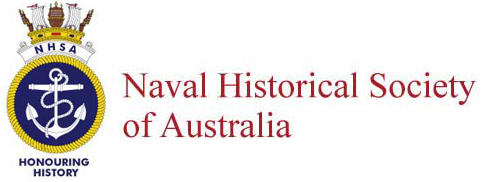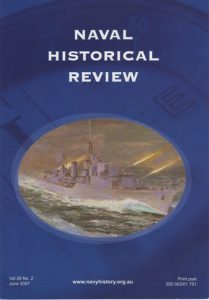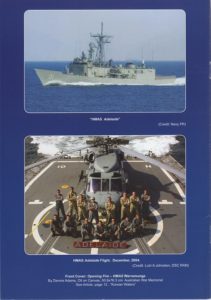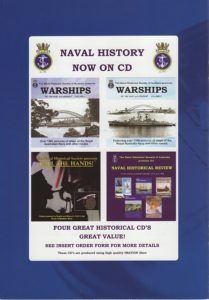By Lorraine and Robert Fildes
Braces on square rigged sailing vessels were used to trim (adjust the angle) of a particular square sail. Hence you would have a port mainsail brace and a starboard mainsail brace. “Main” means the mast concerned – in these cases the main mast.
Both braces were used to move the yardarm of the mainsail to best utilise the direction of the wind. The mainsail Is the lowest and largest sail on the main mast of a square-rigged vessel. Just to confuse matters even more, the mainsail was often called the “course”. The colour illustrations show how such main braces appeared – in this case on the barque James Craig based at Pyrmont in Sydney.
Thus, we have established that there is no single main brace – there are two of them for each square sail. Hence the title of this article. (No, you are not allowed to “splice the main brace” just yet).
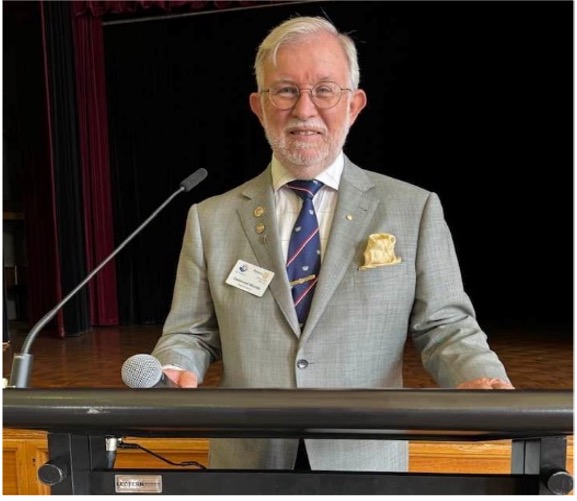
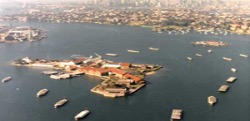
The term “Splice the main brace” implies there is only one brace – but we have established that is not true. On a square-rigged sailing vessel in stormy weather (merchant ships) or during a naval battle (warships) one of the braces might get damaged, and so it had to be repaired as soon as possible. Because the ropes concerned went through pulley blocks, knots couldn’t be used and so the ropes had to be partially unravelled and then spliced back together again. This was a difficult job especially in bad weather or during a battle, so a reward for the seamen might be a glass of spirits.
The Royal Navy (RN) still uses the phrase “Splice the main brace” as a formal order, issued by the Monarch or the Admiralty Board or a designated senior officer to issue an extra ration of rum on special occasions such as after a victory in battle, the change of a monarch, a royal birth, a royal wedding or an inspection of the fleet.
It is interesting to look at a timeline and the use of alcohol in the RN. Splicing the main brace was a difficult repair task rewarded with rum. It is believed to have started in the 1600s.
When the RN first made its presence felt in the Caribbean, its sailors had a daily one-gallon beer allowance. In 1655, after Captain Penn, of the RN had defeated the Spanish in Jamaica, he bought the local sugar cane spirit for his men, whose beer ration was long gone. The sailors liked it and moreover it lasted well on board, unlike beer which soured in the barrel.
By 1731 the British Navy Board had decreed rum an official daily ration. Two gills (1/4 pint/284mls) of neat, 80 proof rum, for every rating.
Sailors were often found to be drunk after their ration of rum so in 1740 Admiral Edward Vernon ordered the rum ration to be diluted with water – creating grog. Admiral Vernon issued his Order No. 349 to Captains on 21 August, 1740. His order refers to the “unanimous opinion of both Captains and Surgeons that the pernicious custom of the seaman drinking their allowance of rum in drams, and often at once, is attended with many fatal effects to their morals as well as their health … You are hereby required and directed … that the respective daily allowance … be every day mixed with the proportion of a quart of water to a half pint of rum, to be mixed in a scuttled butt kept for that purpose, and to be done upon the deck, and in the presence of the Lieutenant of the Watch who is to take particular care to see that the men are not defrauded in having their full allowance of rum….”

In the Royal Navy, the rum ration, or “tot”, which was given out from 1824 to 1970 consisted of one-eighth of an imperial pint (71 ml) of rum at 95.5 proof (54.6% ABV), given out at midday. The rum ration, which was part of the allowance of a RN sailor, was abolished on 31 July 1970, a day known as Black Tot Day.
Gradually as time passed the term “splice the main brace” became used as the title to reward seamen after any particularly difficult job had been successfully completed. This could well be after a vessel had become dismasted during a storm at sea when rigging and spars might have to be cut away and jettisoned to save the ship.


CROWN OF INDIA Barque – built 1885 and 2056 gross tons. On the left circa 1890, on the right at Sydney circa 1895. The vessel was dismasted in a squall shortly after leaving Newcastle NSW with coal for San Francisco USA.
Sail came to an end as the dominant power source for vessels but the expression “Splice the main brace” lives on, particularly in the RN and other associated navies such as the Royal Australian Navy. “Splice the main brace” is now a ceremonial toast.
In the case of the Royal Navy, the Queen and the Board of Admiralty retain the right which they exercised in 2005 after the International Fleet Review when Her Majesty finished her message to the fleet with the instruction to ‘Splice the main brace’. Recent occasions include Queen Elizabeth II’s Diamond Jubilee (2012), Trafalgar 200 Fleet Review (2005), Birth of Prince Louis of Cambridge (2018).
The phrasing remains traditional: “Splice the main brace — to Her Majesty!” or “Splice the main brace — to mark the birth of Prince Louis!” Of course, now it would be “to His Majesty” as the Royal Monarch is the Commander in Chief of the Royal Navies (Australia, Canada and New Zealand).
When the RAN was formed in 1911 the Royal Navy’s long-standing tradition of issuing a daily rum ration was not adopted. An issue of beer became the alternative. Attitudes toward alcohol began to shift as the 20th century progressed. Concerns about discipline, safety, and operational efficiency grew, particularly as ships and technology became more complex.
The alcohol policy which allowed sailors to purchase limited quantities of beer on board when operational conditions permitted came under review. As expectations for workplace conduct evolved, the RAN tightened its alcohol policies. By the late 1980s and 1990s, alcohol at sea was increasingly restricted. Commanding officers were given discretion to ban drinking during operations or in hazardous environments. Eventually, in the early 21st century, the RAN introduced a near-total prohibition on alcohol consumption at sea, except under strictly controlled conditions such as ceremonial toasts or special occasions.
Some special occasions when RAN ships companies did “splice the main brace” included the following:
- World War I — after the capture/sinking of SMS Emden (Nov 1914)
- Victory in Europe / end of hostilities – VE Day / WWI/WWII. Multiple RAN ship histories recount the King’s command (or senior command signals) to “Splice the main brace” on cessation of hostilities and other major victory moments.
- 15 August 1945 — VJ Day / end of WWII in the Pacific: HMAS Nizam. At 11:20 on 15 August 1945 the signals “Cease hostilities against Japan” and “Splice the main brace” were received by flag hoist (British Pacific Fleet / RAN context). This is one of the clearest documented RAN-related main-brace occasions.
- 15 June 1953 — Coronation Review of the Fleet (Queen Elizabeth II). The Coronation Fleet Review at Spithead (15 June 1953) drew a large international fleet that included RAN units (e.g. HMAS Sydney in the review). Contemporary press reports note that the Queen signalled “Splice the main brace” during the coronation/naval review—so RAN ships present at Spithead were party to that order.
- 12 October 1982 — HMAS Torrens (escort to HM Britannia). On the 12 October 1982, after completion of escort duty for HMS Britannia during Queen Elizabeth II’s royal tour of Australia, the crew of HMAS Torrens was authorized to “Splice the main brace” in honour of Her Majesty. This is rare post-1970 use of the tradition.
- 22 October 2024 King Charles and Queen Camilla reviewed the Royal Australian Fleet on Sydney Harbour.
Dear subscribers, you have all done very well getting to the end of this article without collapsing from reading fatigue.
You now have the authors’ permission to “Splice the main brace” with whatever spirits are at hand!
References:
Burroughs Walter, Rum Issues, Naval Historical Society of Australia, available at https://navyhistory.au/?p=75634&preview_id=75634&preview_nonce=c83a2e464c&_thumbnail_id=-1&preview=true
Splice The Mainbrace – Origin, Harbour Guides, available at, https://www.harbourguides.com/news/SPLICE-THE-MAINBRACE—-ORIGIN
Splice the Mainbrace, published by Torpedo Bay Museum, available at, https://navymuseum.co.nz/explore/by-themes/customs-and-traditions/splice-the-mainbrace/
Ian Phillips, Naval Traditions, Toasts and Customs, naval Historical Society of Australia, available at https://navyhistory.au/naval-traditions-toasts-and-customs/
Jubilee Greetings, Royal Navy News, available at https://www.royalnavy.mod.uk/news/2022/may/31/20220531-jubilee-greetings
Video of Interest, Why the Navy Banned Rum, and Then Brought Back Beer (Sort Of), 6:30 mins.
